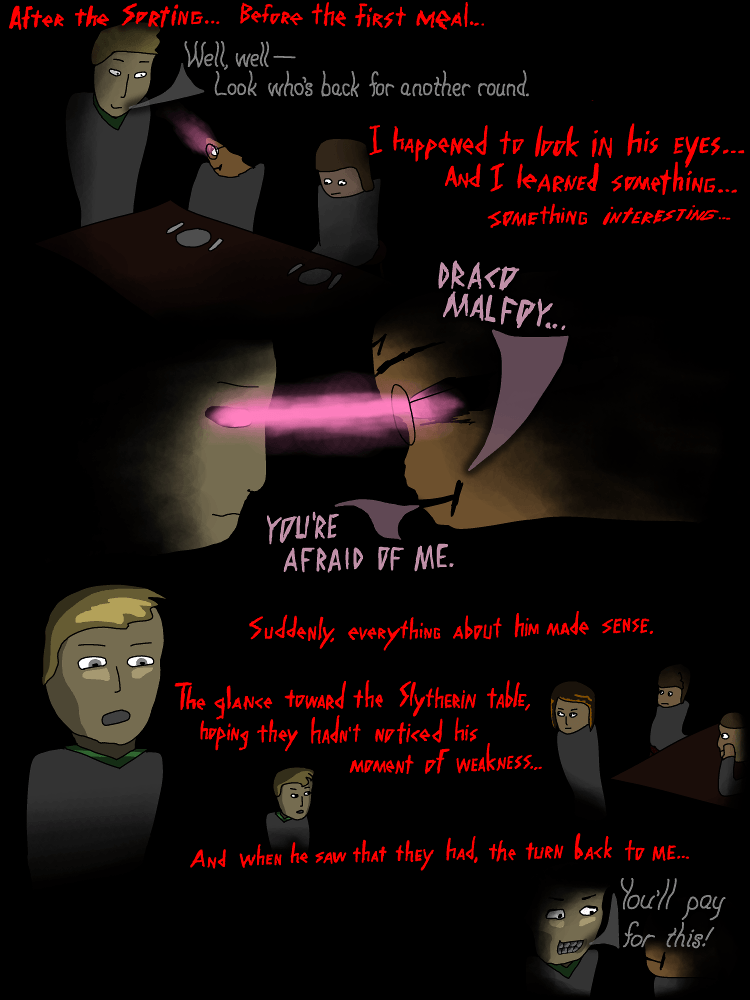Legilimency.
Magic, in stories, has two semi-conflicting roles. One, it's there to be awesome, for the drama and the spectacle. And two, it's there to represent something from real life – to function as heightened reality. An individual story can exist anywhere on this spectrum. Sometimes, like in A Couple of Badass Superheroes, I write fantastic powers entirely because they're awesome and hilarious. Voldemort's Children is usually the opposite. The purpose of this magic is to talk about things that exist in real life.
The ability to intuitively judge what other people might be thinking and feeling is, after all, something that exists in real life. So Legilimency isn't really something that's new or unheard-of. But compared with its real-life counterpart, Legilimency is more powerful and more reliable... and most importantly, it has a name. So it can be a Thing in the story – an issue at stake – something that you can point to, think about, and ask questions about.
Approximate readability: 7.42 (778 characters, 162 words, 13 sentences, 4.80 characters per word, 12.46 words per sentence)
 encourage me
encourage me

